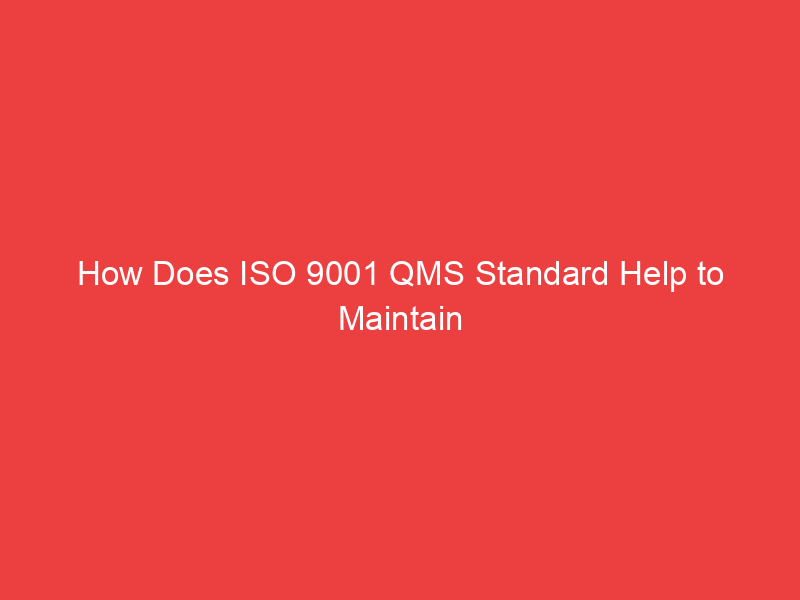The worldwide standard ISO 9001 specifies the requirements for a QMS (Quality Management System), which enables businesses of any size to offer products that are reliable and of high quality. The adoption of ISO 9001 can offer an organization a number of advantages, which are well-acknowledged in the world of business. The clients will still want the same level of quality and consistency in goods and services, though, years after the QMS has been implemented. Are there any elements of the ISO 9001 standard that can help a company make sure that this is truly possible to deliver?
Numerous quality management principles, including customer focus, management involvement, continuous improvement, defining the organizational context, and delivering continuous improvement, are the foundation of ISO 9001. What areas of the standard should we pay special attention to when product quality over a longer period needs to be achieved? Each of these components has a significant role to play in a QMS. Let’s examine them and see how they can be of help with:
- ISO 9001 QMS Documented information: As we all know the new approach to the ISO 9001 documents and records control as per the updated QMS standard, ISO 9001:2015 is less prescriptive regarding the documentation that an organization must maintain; however, process maps and statements of work can help ensure that crucial details of an organization’s processes are maintained and can greatly aid in the training of new and existing staff. This may be essential for maintaining service levels.
- Control of service provision and changes: The clause can guarantee that the business can maintain consistency in its operations and that any modifications can be successfully implemented with the least possible impact on the caliber of the provided services or goods.
- QMS Competence and awareness: To ensure consistency in services or products, this is still another important component. Consistent service delivery can be achieved by making sure all the staff members are informed about all new and existing requirements. Competence and awareness can take many different forms, from making sure that the staff is aware of developing objectives or requirements to helping to make sure that the ISO 9001 QMS awareness training is completed and refreshed, but managing this piece correctly is crucial for a successful conclusion.
- ISO 9001 QMS Internal audit: Any QMS that has received ISO 9001 certification must include this. Your internal processes’ continued effectiveness can be greatly influenced by the capacity to conduct relevant and accurate internal audits and take prompt, decisive remedial action when necessary.
- Customer satisfaction: The feedback from the consumers is maybe the most accurate indicator of the quality of the service your business offers. The true indicator of whether your organization succeeds or fails is how well you align your customers’ expectations with the service you provide. Make sure this opinion is solicited frequently and impartially, then you should examine the results and respond appropriately.
So, as we can see, a number of provisions in the ISO 9001:2015 standard can assist us match our service delivery to client expectations, and a number of provisions of the particular clauses can help ensure that your company can offer a consistently high-quality product.

